Ya tuve en una ocasión la posibilidad de tener en mano miniaturas de Warlord Game de Bolt Action y son muy bonitas, tanto en proporción como en detalle de esculpido. Si os fijáis en las fotos tanto las rasgos faciales, como los detalles de los uniformes son muy buenos.
No tenéis que perderos tampoco los detalles de los jeeps, que a primera vista pueden parecer pequeños, pero si miráis las fotos veréis que tiene una proporción exacta al original. Vamos una chulada. Y el apunte histórico al final añade algo de historia a las minis.
One of the previews that caused the most stir on our stand at Salute this year was the work-in-progress SAS Jeeps for the North West Europe campaign. We’ve had rather a lot of correspondence asking when these fantastic new miniatures will be released. Happily they are available now!
The Special Air Service, better known as the SAS are famous for their escapades in the Western Desert, working in tandem with the Long Range Desert Group. Less well known are the SAS action in north west Europe later in the war. Now you can refight their actions behind enemy lines in Europe during the later years of the war.
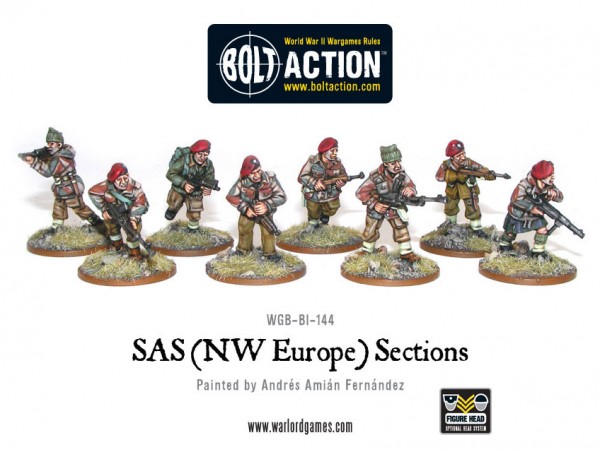
The first release is this pack of two four-man sections. Packing a variety of wepaonry, these tough men will be fighting behind German lines, rading where they can and gathering intelligence as they go. Each section has a bren gunner and all model use our Figure Head System so you can chop and change the heads as you see fit. Most of the SAS men are sporting their regimental red beret (sadly changed from the sand-coloured one they had proudly worn).
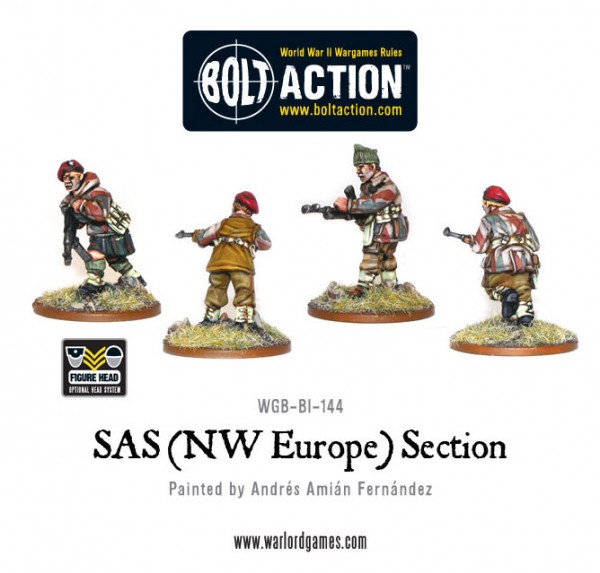
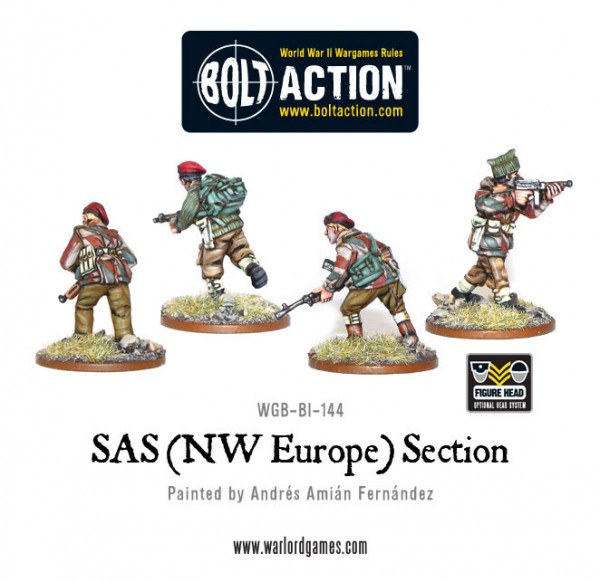
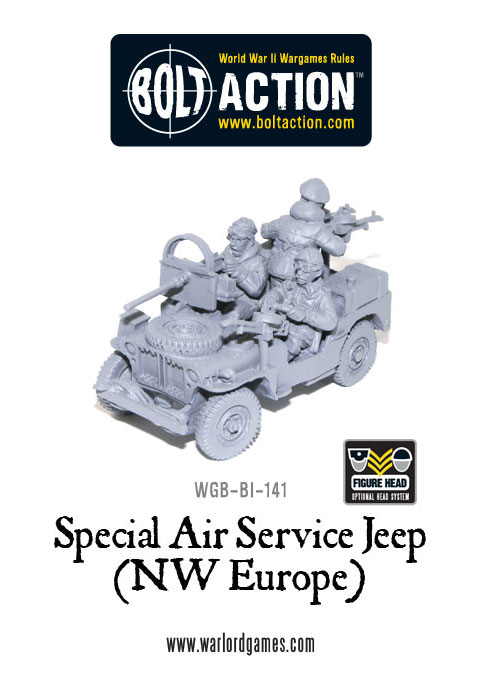
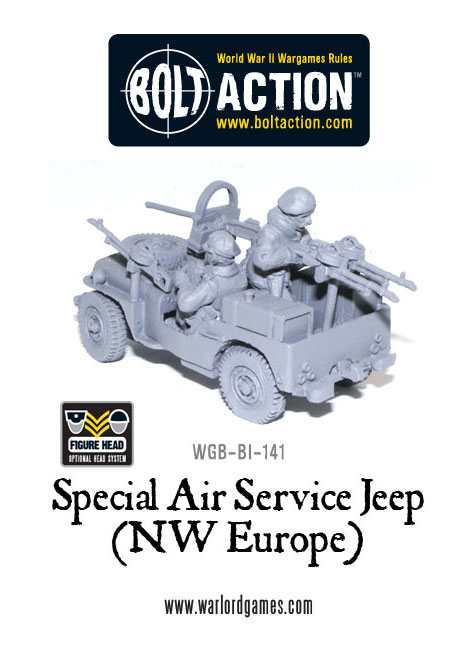
To give the SAS section more mobility an firepower we also have these heavily modified Jeeps. As you can see from the photo above they come with three crew, each making good use of the Figure Head System allowing you to swap them with those of the foot troops for even more variety. The front gunner has an armour plate with bullet-proof glass to keep him from the worst of the incoming small arms fire. Armed with a mix of Vickers K and .50 cal machine guns these vehicles will get your raiders into action, tear up the opposition and have them speeding out for a nice cup of hot tea in no time.
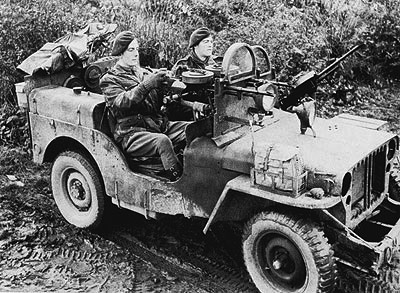
Next you’ll see the armoured version of the SAS Jeep. No less well-armed as it mounts five Vickers K machine guns! In addition the crew are protected by armour-plating to the front and bullet-proof windscreens as well as extra armour to the rear.
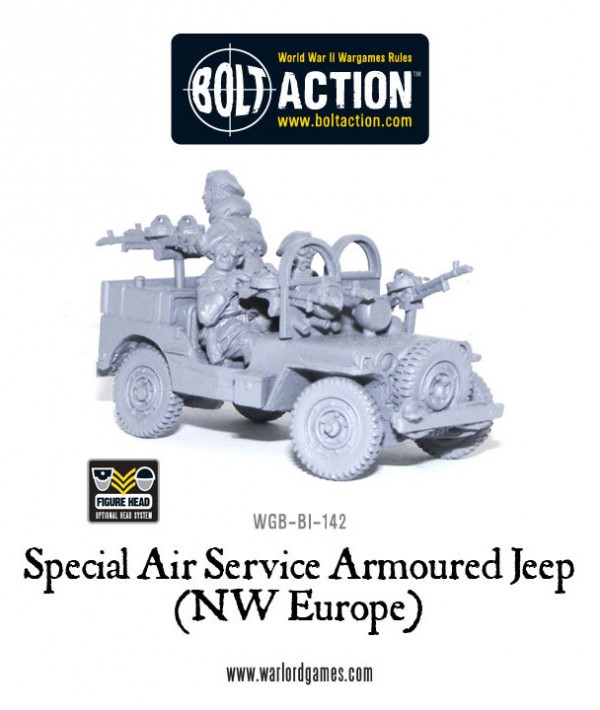
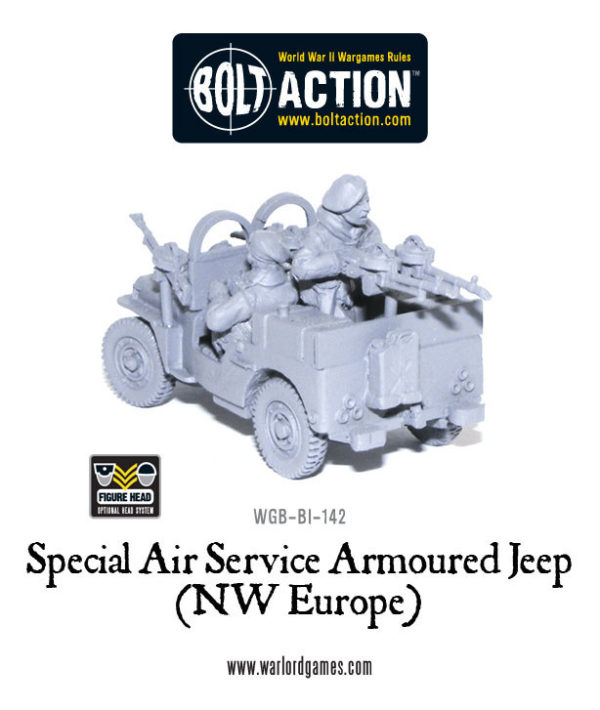
We know you’re going to want to buy more than one or two of these superb vehicles so you can get your hands on three of them – one armoured and two unarmoured in our SAS Jeep Patrol deal. Saves you cash in the process too!
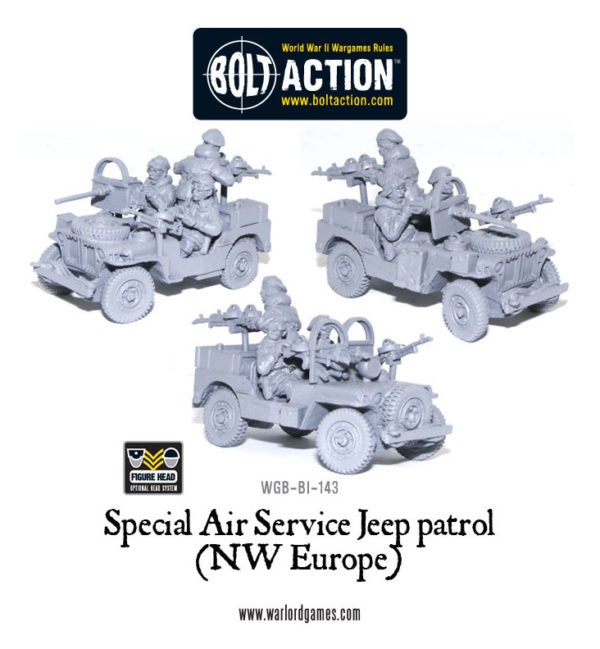
Captain David’ Stirling’s SAS (Special Air Service) had carved their regiment’s name in the annals of history through their daring raids in the Western Desert. With the North African campaign won by the Allies, the SAS we split up to prey on German and Italian forces in other theatres. Whilst some units fought in Sicily, Italy and other areas of the Mediterranean, it is the squadrons that relocated to fight in north west Europe that interests us here. Those units that joined the war against Hitler and his armies became a brigade under Lt-General Boy Browning’s Allied Airborne Corps. It consisted of two British, two French and one Belgian SAS Regiments.
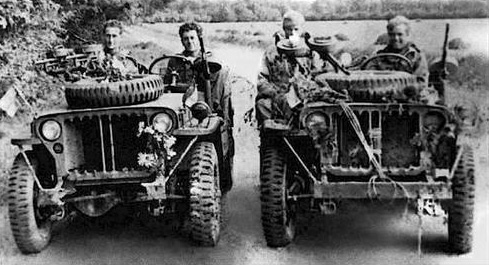
In the open deserts of the North African campaign the highly mobile SAS patrols reigned supreme but on entering the war in Europe they would face an entirely different type of terrain – one for which they had no experience in fighting over. Supremely flexible, as ever, the SAS men quickly adapted and they would retain the regimental philosophy of setting up bases behind enemy lines, gathering vital intelligence and, if the opportunity presented itself, wreak havoc before slipping away.
During the actions in France the SAS often had four-man units working with local French Resistance cells, with bridges, railway lines, supply dumps, etc all becoming favoured targets as they continued to harass and disrupt the enemy. The SAS Brigade would continue in this role through Belgium, the Netherlands and into Germany itself.
The scale of each SAS action varied greatly, ranging from small four-man patrols up to hundreds being parachuted behind enemy lines. For example, a four-man team mounted in Jeeps killed or wounded 60 Waffen-SS men, destroying a truck and two staff cars in the village of Les Ornes in France. Towards the other end of the scale over 140 men parachuted, along with their supplies, near Dijon as part of Operation Houndsworth. Running from 6th to 21st June 1944, the operation saw the SAS punishing the occupying Germans with near constant attacks – the main railway line was hit dozens of times, over 70 vehicles were destroyed and more than 200 enemy killed or wounded – along with in excess of a hundred captured. Dozens of targets were identified for the RAF to interdict. It would not be all such a one-sided affair for the SAS though…
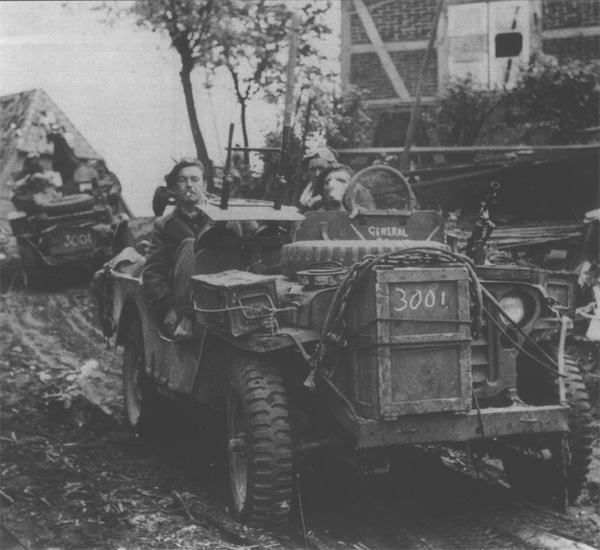
Operation Bullbasket, taking place around Poitiers, was to hamper German reinforcements heading towards the Allied beachhead in Normandy and to disrupt the 2nd SS-Panzer Division, Das Reich, in particular. Utilising their usual modus operandi, the SAS hit the German infrastructure hard and eventually discovered a large fuel train – presumed to be that for Das Reich. The train, and Das Reich’s valuable fuel, was destroyed by MOsquitos from RNZAF 487 Squadron. The SAS were then to be betrayed by collaborators…
The German SS Security Police (Sicherheitdienst, or SD) reconnoitred the area before a force of the 17th SS-Panzergrenadier Division, Götz von Berlichingen, stationed nearby surrounded the camp before attacking in force at dawn. The SAS numbered forty and were joined by a handful of French resistance fighters an the American pilot of a P51 Mustang who had been shot down in the area. The battle was one-sided and the SAS attempted to break out of the German cordon. Less than a dozen made it.
Of the captured the SAS were subject to Hitler’s ‘Commando order’ which states that any Commandos or Paratroops by swiftly executed whether they were in uniform or not. The French Maqus were executed and the SAS leader of the column was beaten to death with a rifle. After an argument between the German Army and the SS over who should perform the executions, the remaining SAS men were led to the woods, forced to dig their own graves and then shot by Army firing squad. Of the injured SAS men captured all were murdered by lethal injection in their hospital beds. Those lucky enough to escape, led by the Squadron’s commanding officer, John Tonkin, regrouped and continued to perform their original orders to be a thorn in the German side until the end of the operation.
The effectiveness of the SAS in north west Europe during the later years of the war is undeniable. Aside from inflcting al;most 8,000 casualties, taking nearly 5,000 prisoners of war and destroying or capturing around 700 vehciles, the SAS destroyed several trains, cut over a hundred railway lines and derailed dozens more trains. All this in addition to tying up large amounts of the enemy resource in extra guard duties and dealing with their diversionary raids.
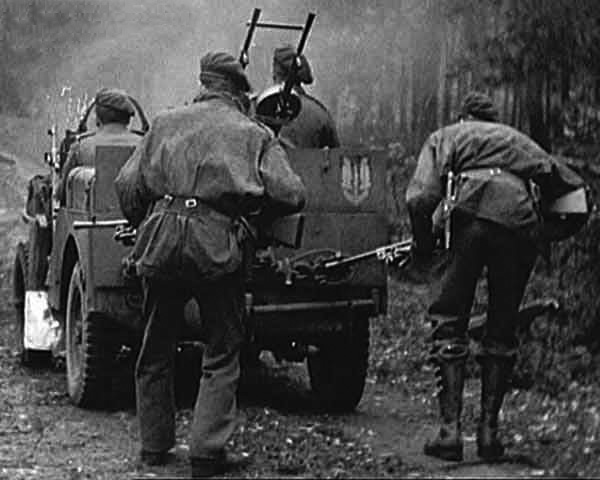
It can certainly be said that the remarkable men of the Special Air Service live by their regimental motto, ‘Who Dares Wins’…


No hay comentarios:
Publicar un comentario